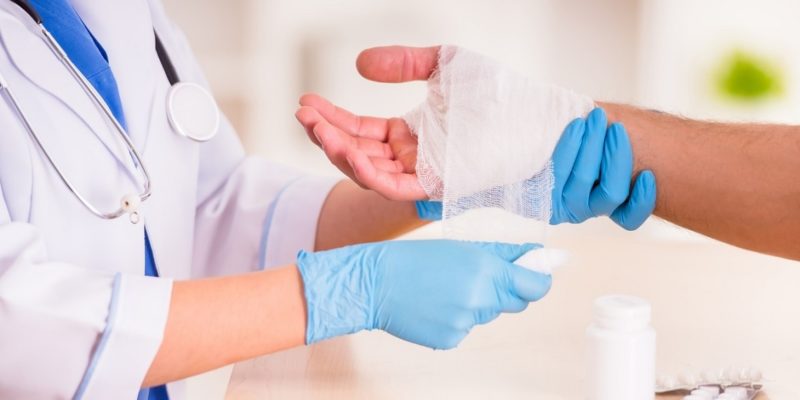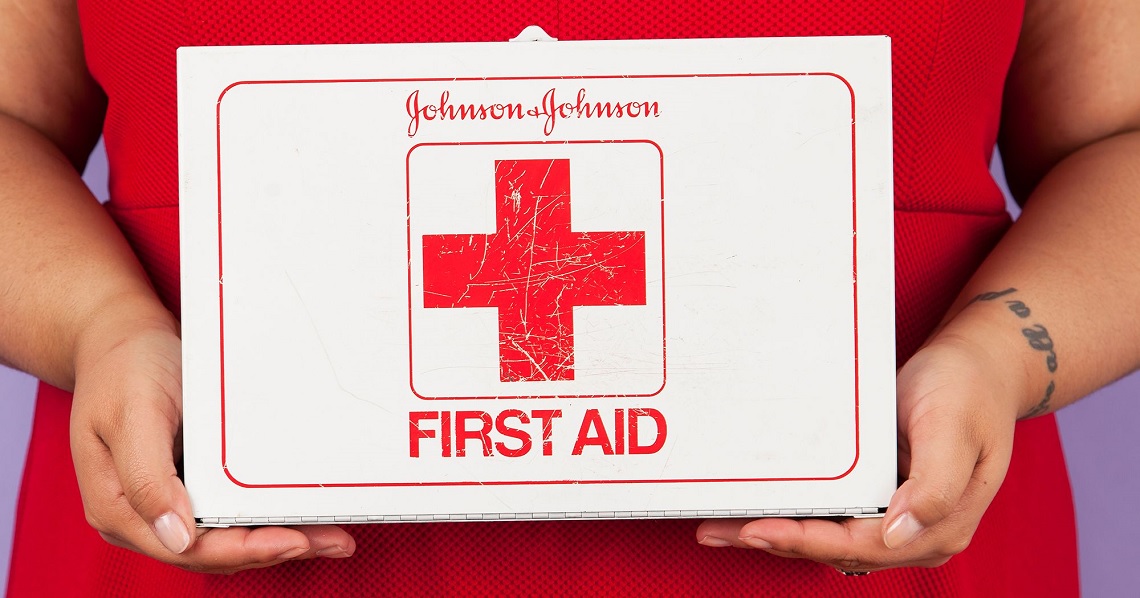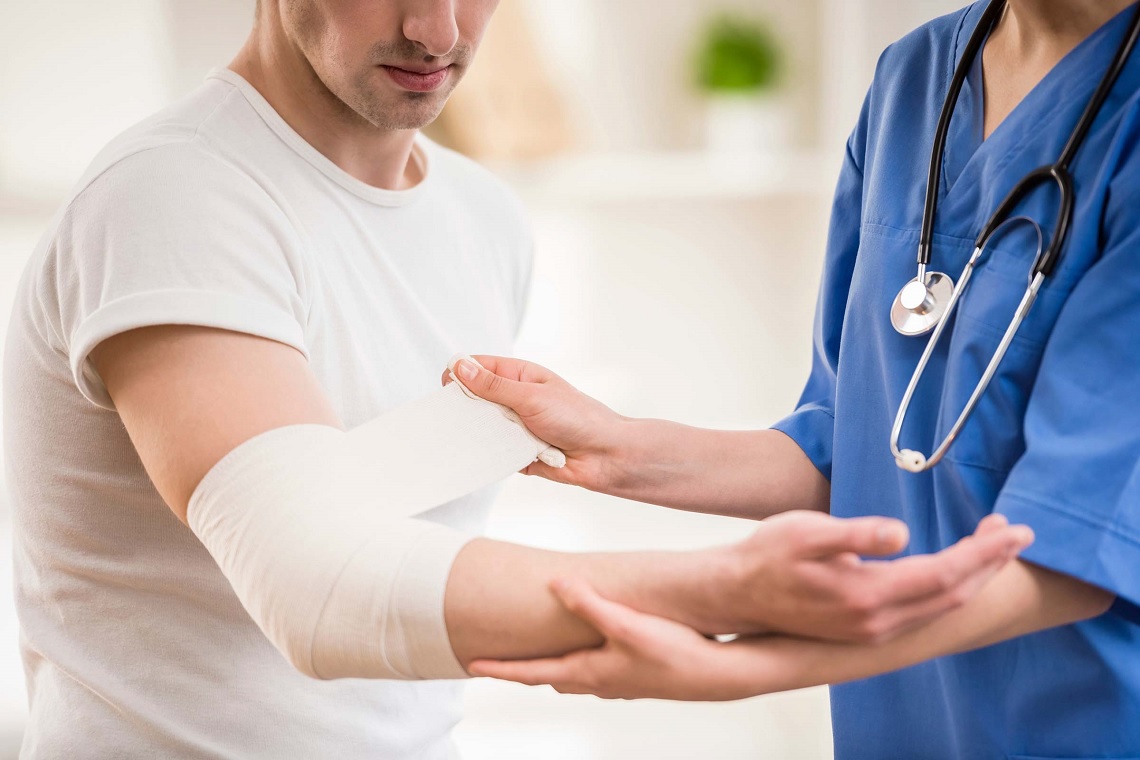
By Apothecary Marián García
Who hasn’t suffered a small burn at home? These little mishaps form part of everyday life. It is estimated that 3 out of every 1000 people need healthcare assistance for a burn, although fortunately only 5% need hospital care.
What types of burns are there?
The most common are lesions caused by the effect of heat on the skin, like the classic burns in the kitchen after contact with the iron, the oven or an oil splash. However, let’s not forget that as well as heat burns, there are other types of burns caused by different agents such as:
– The cold, causing freezing.
– Acids and bases, which cause chemical burns.
– Electric voltage, which can cause chemical burns.
– Radiation, causing sun burns from UVA radiation, that are so common in summer.
It is important to bear in mind that, in general, the treatment of these burns is similar regardless of their cause as their development is similar to that of burns caused by heat.
How do I know if a burn is serious?

First degree burns are those that can be treated at home and they are characterised by pain, reddening and swelling. They only affect the outer layer of the skin, which remains intact and does not produce any discharge. In contrast, second degree burns also affect the inner layers of the skin. In this case, as well as the classic pain, reddening and inflammation, the skin can split open or form blisters.
Lastly, third degree burns require medical assistance, as they affect the deepest layers of the skin. The colour of the burn goes from white to blackish and sores form on the skin.
Why is it important to act against burns?
The skin is “our suit”, it is the fabric that protects us from the exterior, and burns are injuries that cause our suit to break. Depending on the depth and size of this “breakage”, a burn can leave us exposed to the loss of liquids, loss of heat, which can cause hypothermia, and the loss of the barrier function against microorganisms, increasing the probabilities of infection.
The 7 steps to follow at home in the event of a mild burn

1. Keep calm. Although it seems obvious, the first step is to get the cause of the burn under control. In other words, before trying to treat the burn you should, for example, turn the gas off and remove the frying pan full of oil to prevent a bigger domestic accident from happening while you treat the original burn.
2. Clean the skin with tap water or preferably with physiological saline solution at room temperature for between 10 – 15 minutes, do not rush this step. This also helps to relieve the pain considerably. It is important not to use cold or freezing water!
3. Dry the skin by patting it very gently, without rubbing it.
4. Assess whether to apply low level topical steroids (hydrocortisone). If necessary the antiseptic of choice is chlorhexidine.
5. Moisturise the wound using creams, gels, oils or dressings. It may be useful if these products include some active ingredients like Rose hip oil due to its antioxidant vitamin E content.
6. It is advisable to cover the burn and change the dressing daily.
7. If new tissue does not start to form over the wound in the next 3 – 4 days, or if you notice any unhealthy looking change to the appearance of the burn it is very important to seek medical advice. Similarly, wounds in delicate areas like the genitals or the face, should always be assessed by a healthcare professional.
There are common remedies like applying toothpaste to burns. Is this advisable?
Perhaps the reasons why toothpaste is used as a remedy for burns is because of the temporary relief it offers due to the refreshing effect obtained by applying certain menthol toothpastes. However, far from being a useful remedy, using products like this can cause infections and complications that can be quite serious. This is because toothpaste, along with other products not intended specifically for burns, contains numerous ingredients that could cause allergic reactions on damaged and particularly sensitive skin.
Remember that…

Superficial burns start to get better in a few days and the whole incident is usually nothing more than a “fright”. If in doubt, always check with your pharmacist. He or she will be able to tell you whether you need to see a doctor or not and will be able to advise you what the best solutions would be for correct healing in your particular case.
Related News
- >> Cleansing the skin(13.12.2017)
- >> pHabulous pregnancy and the skin(13.12.2017)
- >> The importance of blood circulation(13.12.2017)
- >> How to find the perfect blush for your complexion(13.10.2017)
- >> How to properly groom your eyebrows at home?(09.10.2017)
- >> How can we dress up our face tonight?(06.10.2017)
- >> How to look your best when feeling your worst?(06.10.2017)




 Access Week: 1081
Access Week: 1081 Monthly Access: 11056
Monthly Access: 11056 Visitor: 747421
Visitor: 747421